Painting With Water
If you struggle with the mess that seems to be an inescapable part of early childhood painting projects, I am right there with you!
After years of dutifully setting up easels and wiping down paint-smeared hands, faces, shoes and surfaces in the messy aftermath of our creative endeavors, I finally had to face reality: The sloppy, gooey paintings produced during these tempera painting sessions just weren't worth the hassle of setup and cleanup.
There had to be a better way to tap into the creativity of my early learners. After some soul-searching, I substituted water for paint and never looked back.
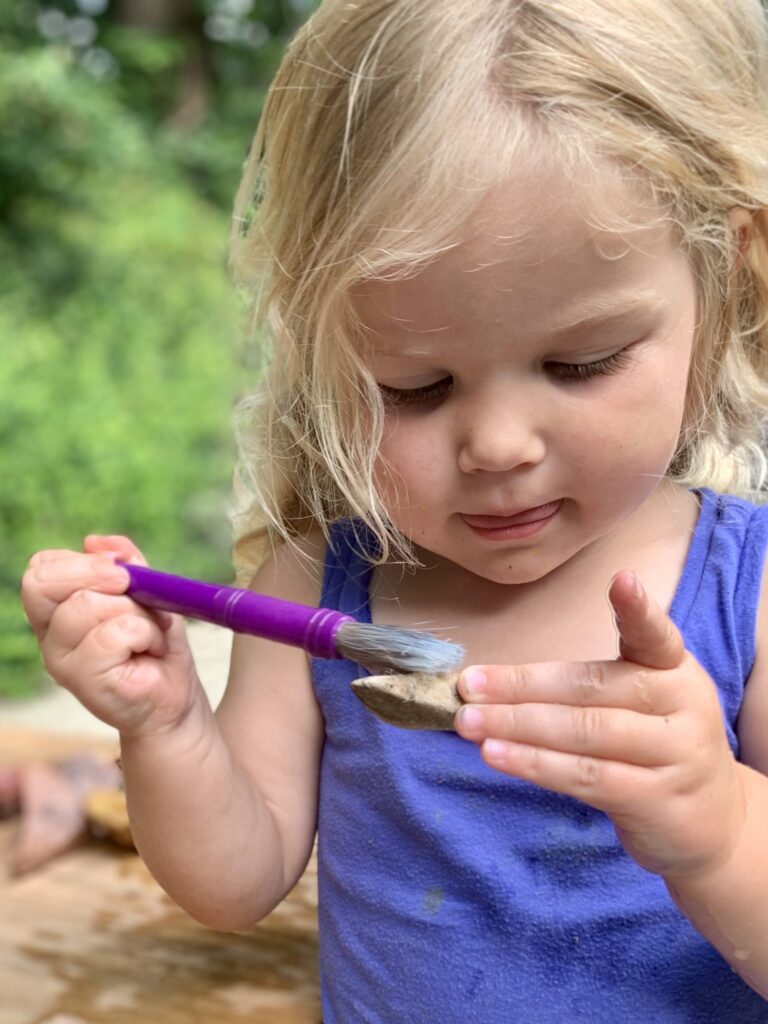
Welcome to the mess-free world of water painting! Regardless of the age or developmental stage of your child or children, this kind of painting never gets old.
By setting the stage with simple, easy-to-use materials such as paintbrushes and water, you can encourage even the youngest children to engage in hands-on investigations fueled by curiosity and creativity.
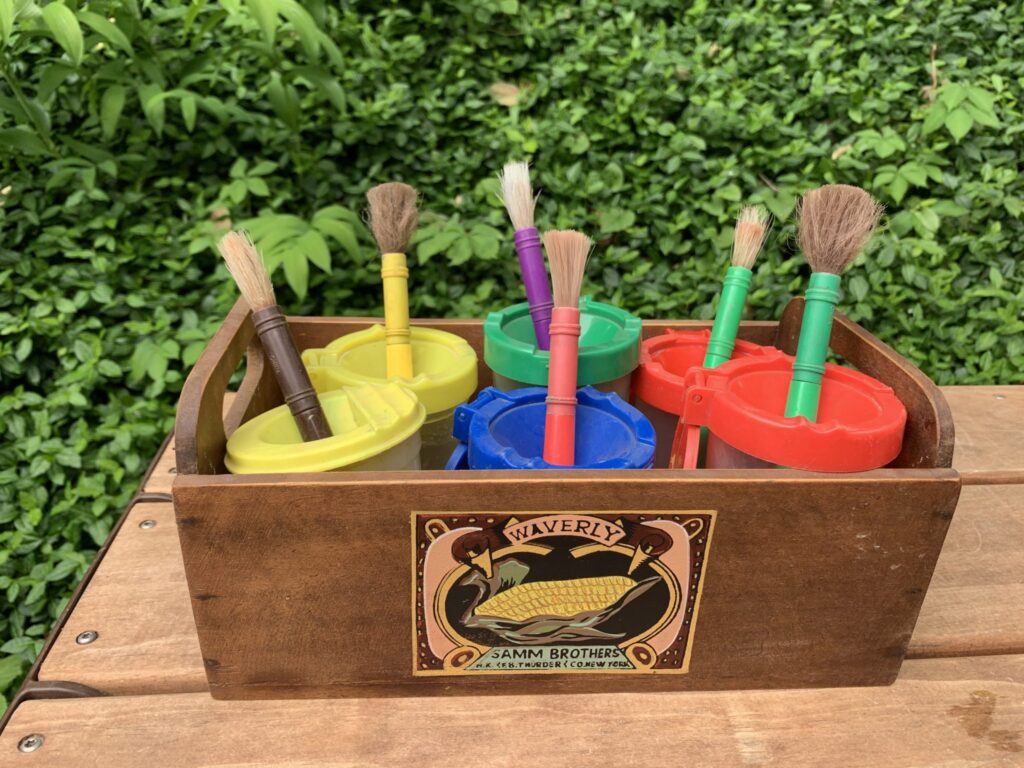
Wondering how to get started? Use what you have! Paint rollers or paintbrushes left over from family paint projects work extremely well. Those bigger brushes and rollers are great for building strength in the hands, wrists and arms, which will make handwriting easier when the time is right.
Then fill some containers with water and let the painting party begin. Water painting can turn a hot or dreary day into a hands-on, brain-building bonanza!
Keep everything in one place for easy access when the mood strikes. I keep mine in the box pictured above—and this box is in regular rotation as we head outside for some creative play.
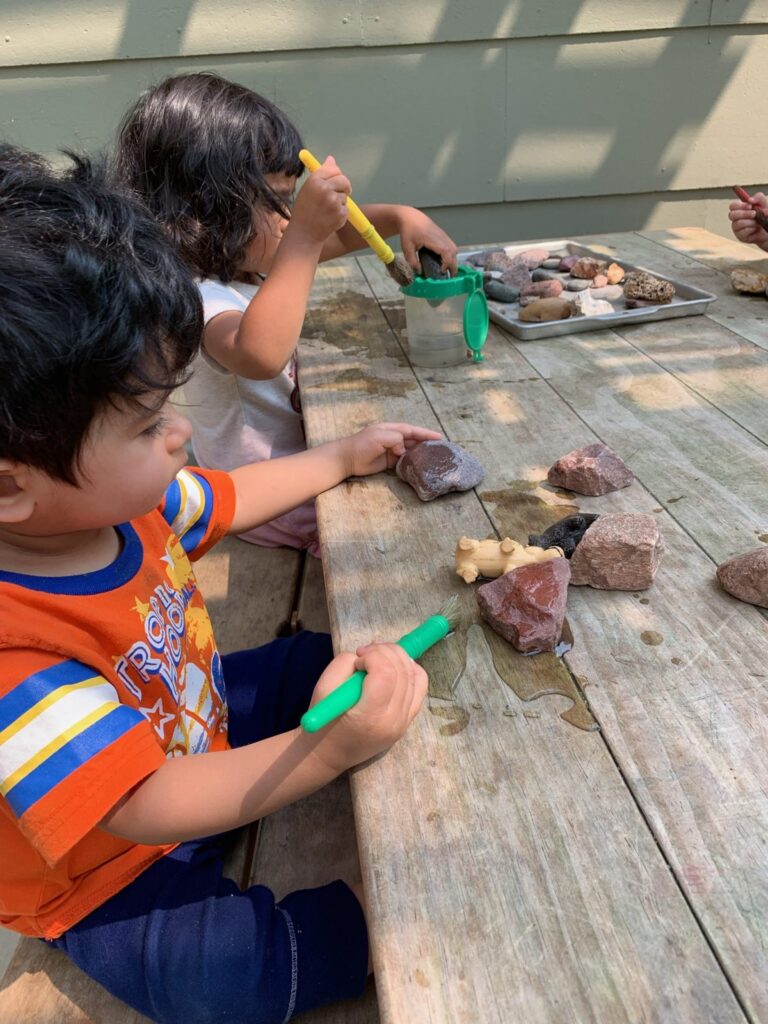
"Wait! My rock isn't purple anymore!" Eleanor has been so busy painting other rocks that she has just made her way back to the rock that she painted first. As her friends gather around for a closer inspection, four-year-old Noah proclaims with a giggle, "The water has evaporated and now your rock is gray. But if you put water on it, it will go back to purple!"
Wow! It's always a delight when a young friend can lead the learning with an impressive vocabulary word like EVAPORATE!
"Watch this," Noah adds. "If I paint here on the sidewalk, what I painted will disappear. The sun dries it up. It evaporates!"
Without a sound, the children begin painting the sidewalk to see if their watery brushstrokes will evaporate as well.
So much is happening in this moment! We have children using their leadership and language skills while mentoring their friends. We have scientific inquiry. This is hands-on, child-led learning at its finest!
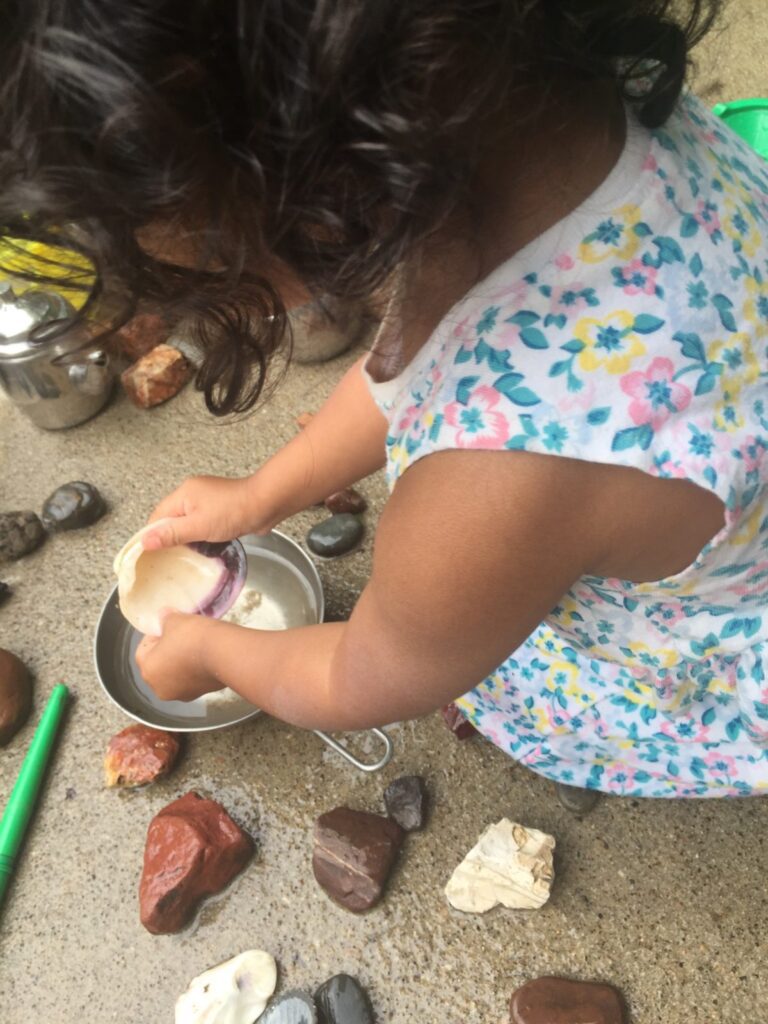
Don't be surprised if the children incorporate the sidewalk, chairs, tables and any available loose parts into their water-painting adventures.
It's fun to watch their brains light up with observations, predictions and cause-and-effect scenarios as the water changes every surface that it touches.
Preschool children have an innate drive to investigate and make sense of the world around them. By integrating science and mathematical discoveries into their play, you can help them build a strong foundation for later STEM investigations.
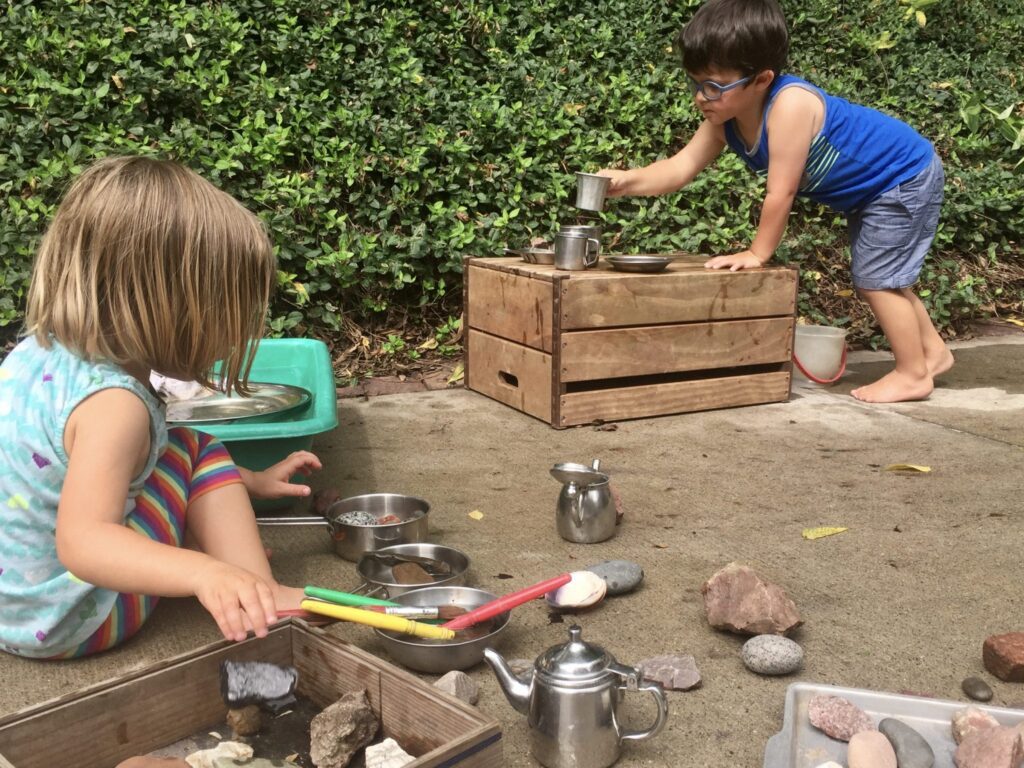
As the children in the group begin to express wonder and share their observations, the water play generally takes on a life of its own.
By bringing in buckets and pans of water, along with a collection of pouring cups and pitchers, you can extend the learning into the mathematical world of quantities, estimation and volume.
This is all data analysis. It may not yet be recorded on paper, depending on the development of your group, but you are planting the seeds for this activity in the years to come.
Of course, we often bring this activity indoors as well—usually in the early spring, when the snow won't melt and the sun won't shine. My indoor setup usually looks something like the photo below:
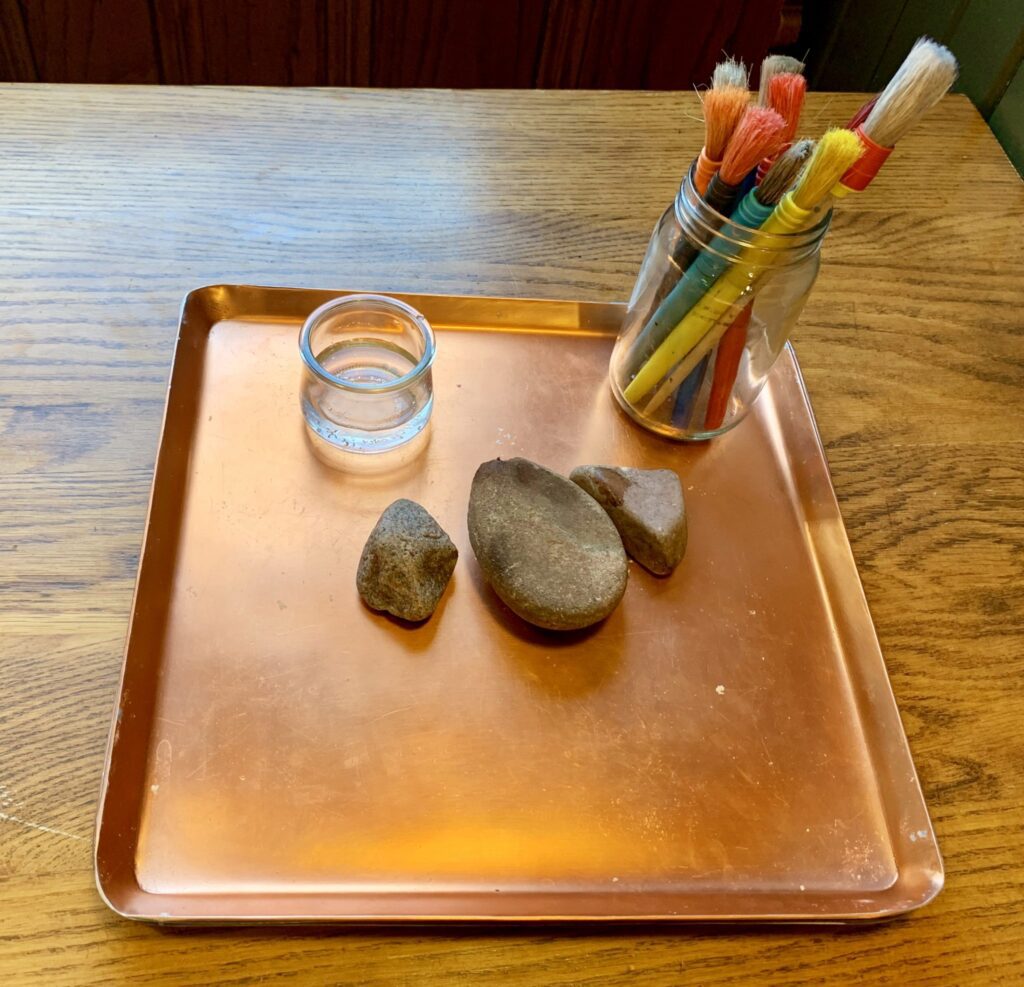
Water painting is a great Monday activity that will lighten the mood of everyone involved.
Just set it up at the kitchen table, pour yourself a cup of coffee and remember: This is what kindergarten readiness looks like!